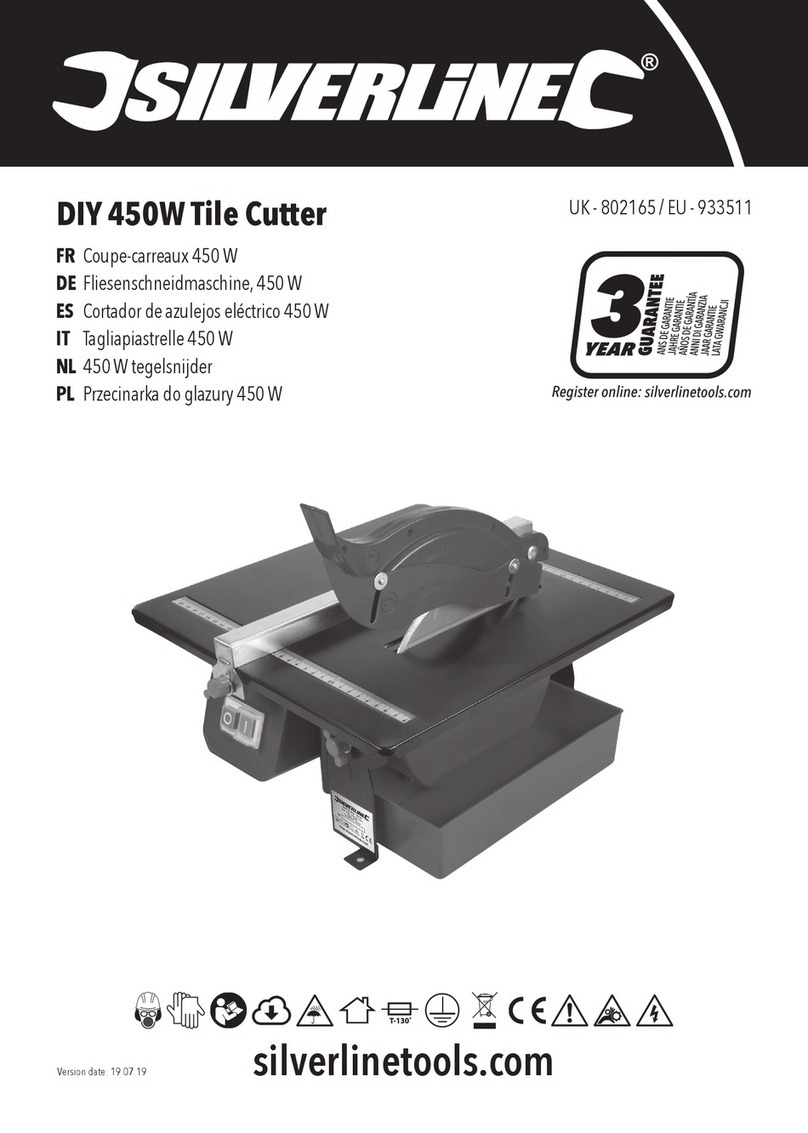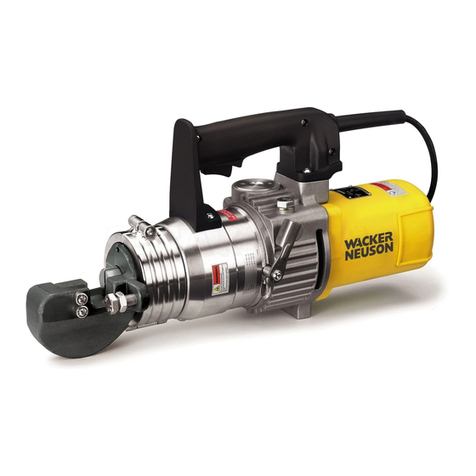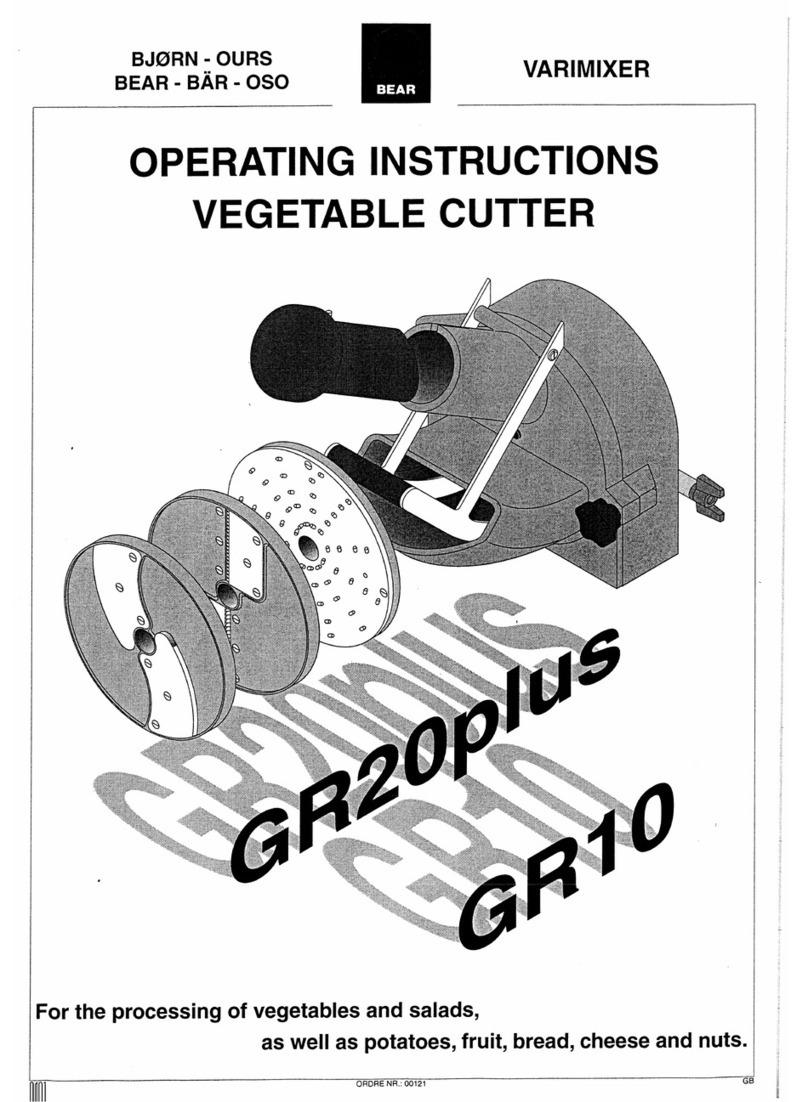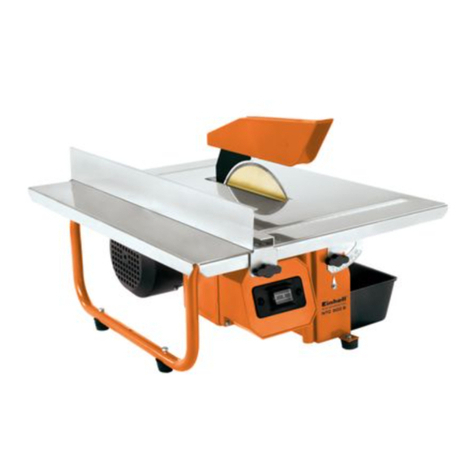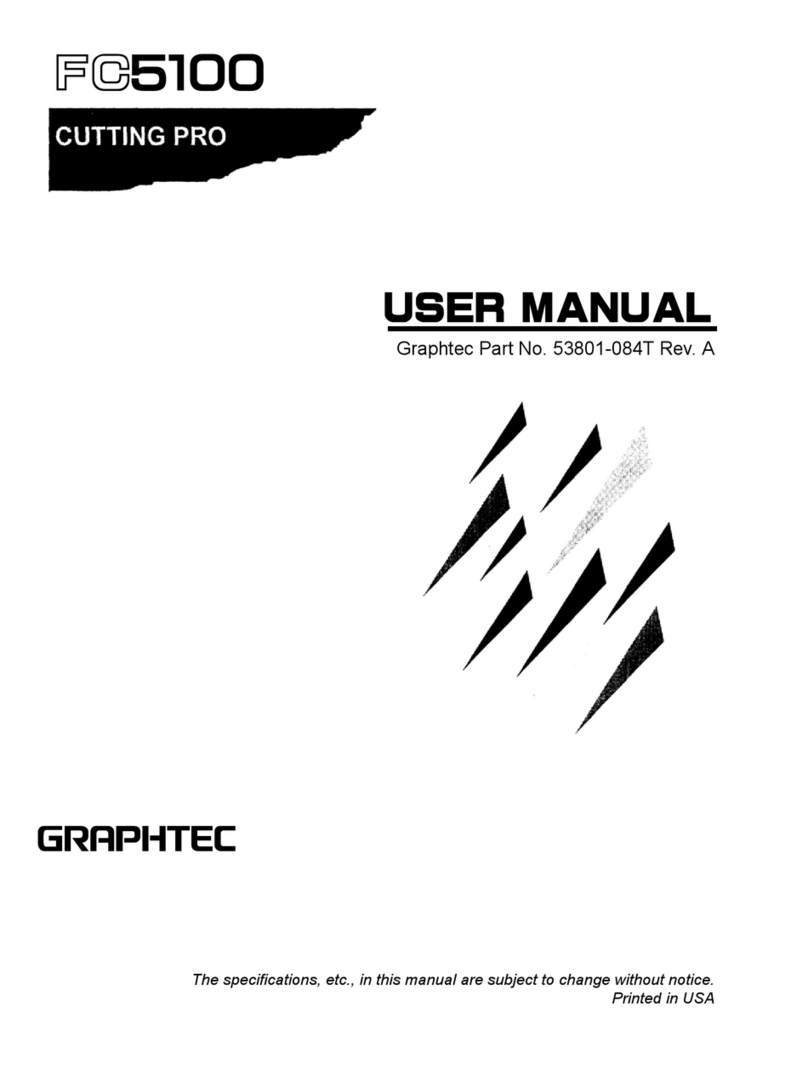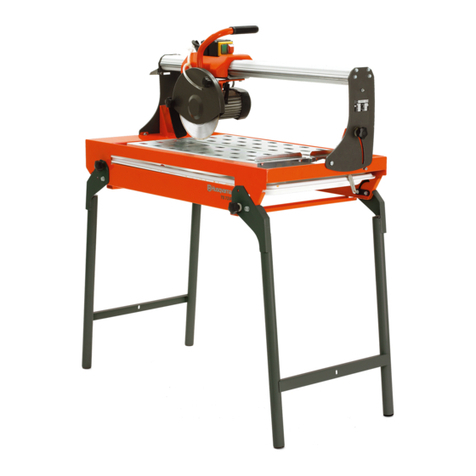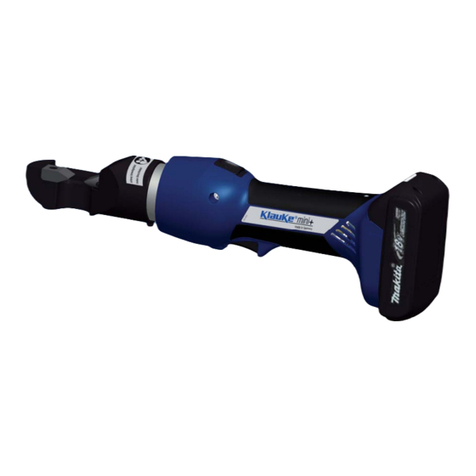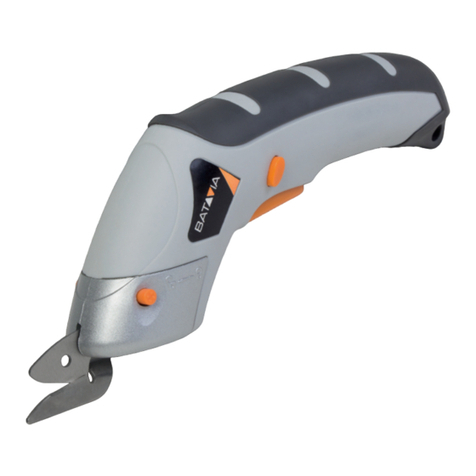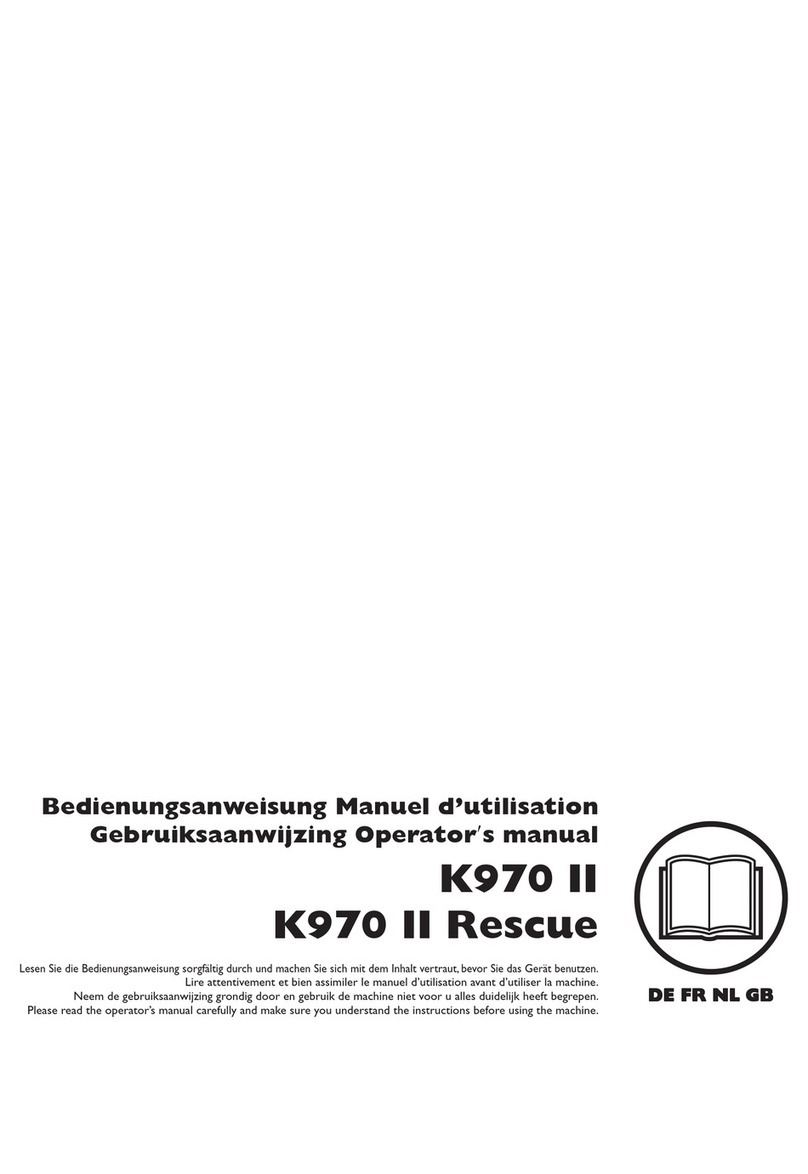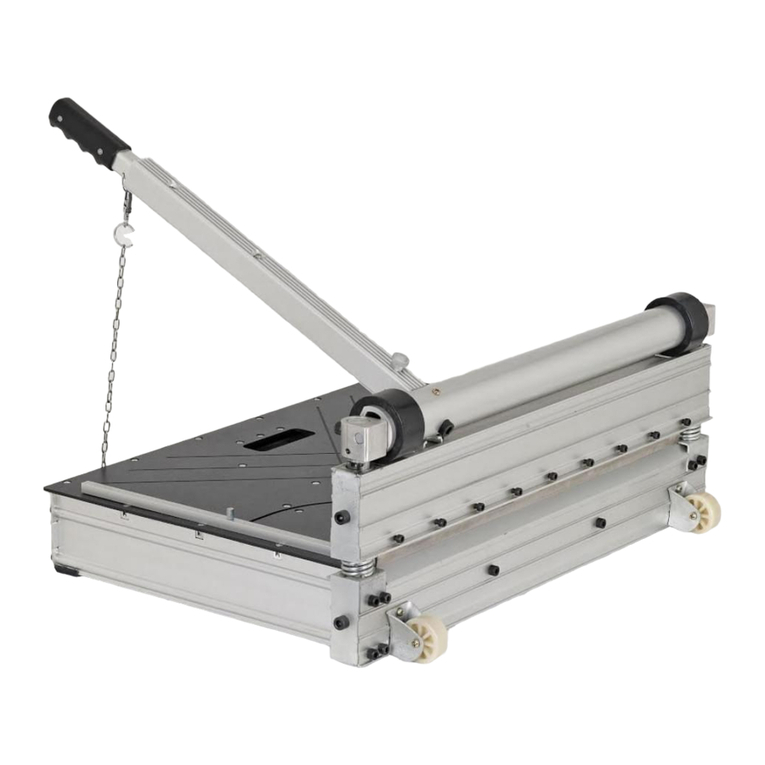Rockwheel C2 User manual

User Guide
Rotary drum cutter_user guide_1.1_EN_12-08-21
https://www.vpgroundforce.com/gb/attachments/
Rotary Drum Cutter (Rock Wheel)
A video showing this product in
action is available to watch now
on YouTube.
Important Notes
All site activity must be thoroughly planned before work commences to
identify hazards and assess risk.
These instructions form guidance for Rotary Drum Cutters. Non-standard
applications should be approved by a suitably qualified engineer.
Ensure all personnel engaged in installation operations are properly briefed
and adequately supervised by a competent person.
THIS USER GUIDE IS NOT CONTROLLED WHEN PRINTED
IF IN ANY DOUBT SEEK FURTHER ADVICE:
ON FREEPHONE - 0800 111 4665
Rev Date Comments Initial
1.1 12/08/21 New issue DSW

User Guide
Rotary drum cutter_user guide_1.1_EN_12-08-21
2
Introduction
The Rotary Drum Cutter is an excavator attachment designed to loosen and remove hard and solid materials such
as natural rock, bitumen, timber, frozen soil and concrete. Rotary Drum Cutters are used in demolition work, road
construction, landscaping, mines and in the civils sector. When excavating tunnels, The 360º rotary movement
enables a high level of precision finish.
Rotary Drum Cutters effortlessly grind through concrete and no additional tools are required for cutting steel
rebars. Demolition and cutting can be completed in one step and the gravel-sized residual material can easily and
efficiently be removed or used for backfill.
Rotary Drum Cutters area more subtle alternative to a hydraulic hammer, making it ideal for sensitive areas such
as inner cities, residential areas and building interiors. Low vibration properties also make it suitable for work
around old and weak foundations, listed buildings or basements .
Equipment Identification
C2 G5/G5 Twin
D10/D15/D20/D30 G40/G50/G60

User Guide
Rotary drum cutter_user guide_1.1_EN_12-08-21
3
Equipment Specification
Model C2 G5 G5 Twin D10 D15
Excavator Size (t) 0.7 - 2.5 2.5 - 6 5 - 10 8 - 12 12 - 18
Hydraulic Power (kW) 9.5 22 44 29 41
Operating Weight (kg) 66 181 200 426 595
Maximum Pressure (bar) 225 400 400 400 400
Working pressure (bar) 50 - 225 180 - 400 180 - 400 180 - 400 180 - 400
Maximum Oil Flow (l/min) 60 65 100 112.5 132
Optimum Oil Flow (l/min) 30 40 80 60 120
Reduction Ratio 1:1 2:1 2:1 1:1 1:1
Drum Speed (rpm @l/min 98 @30 50 @40 95 @80 80 @60 96 @120
Pick Speed (m/s @l/min) 1.39 @30 0.89 @40 1.7 @80 1.8 @60 2.4 @120
Cutter Torque (Nm @bar) 1095 @225 4429 @350 4696 @350 4173 @350 6945 @350
Pick Force (kN @bar) 8 @225 26 @350 29 @350 19 @350 29 @350
Number of Picks 32 32 32 56 64
Size of Pick Holder (mm) 14 19 19 19 19
Drum Diameter (mm) 270 340 340 423 475
Drum Width (mm) 300 405 405 743 832
Drum Spacing (mm) 60 82 82 103 118
Cutter length (mm) 509 618 618 798 937
Dimensions of Cutter Plate (mm) 256 x 160 318 x 220 318 x 220 560 x 410 650 x 495
Model D20 D30 G40 G50 G60
Excavator Size (t) 17 - 26 25 - 38 35 - 45 42 - 52 50 - 70
Hydraulic Power (kW) 70 110 140 140 220
Operating Weight (kg) 1.170 1.444 1.662 2.458 2.478
Maximum Pressure (bar) 400 400 400 400 400
Working pressure (bar) 180 - 400 180 - 400 180 - 400 180 - 400 180 - 400
Maximum Oil Flow (l/min) 320 460 540 540 680
Optimum Oil Flow (l/min) 220 320 360 360 540
Reduction Ratio 1:1 1:1 1.3:1 1.2:1 1.2:1
Drum Speed (rpm @l/min 78 @220 76 @320 49.6 @360 52 @360 64 @540
Pick Speed (m/s @l/min) 2.2 @220 2.7 @320 1.8 @360 2.1 @360 2.4 @540
Cutter Torque (Nm @bar) 14272 @350 23362 @350 40325 @350 37833 @350 46900 @350
Pick Force (kN @bar) 48 @350 69 @350 118 @350 104 @350 129 @350
Number of Picks 64 60 54 54 54
Size of Pick Holder (mm) 25.4 38 / 30 38 / 30 38 / 30 38 / 30
Drum Diameter (mm) 646 677 684 726 726
Drum Width (mm) 1058 1158 835 1050 1050
Drum Spacing (mm) 143 143 202 250 250
Cutter length (mm) 1155 1170 943 1356 1350
Dimensions of Cutter Plate (mm) 700 x 650 700 x 650 700 x650 800 x 650 800 x 650

User Guide
Rotary drum cutter_user guide_1.1_EN_12-08-21
4
Preliminary Checks
Rotary Drum Cutters can be attached to any excavator that meets the necessary mechanical and hydraulic
installation requirements. Check the following points before installation:
The Rotary Drum Cutter should only be mounted on an excavator with sufficient load capacity.
Ensure the Rotary Drum Cutter is compatible with the excavator’s hydraulic systems and hose connectors.
Check the Rotary Drum Cutter for any wear; including cracking or breakage. Contact Groundforce
Attachments if any such damage is found.
Mounting the Rotary Drum Cutter to the Excavator’s Quick Hitch System
1. If a bucket is attached, remove from the Quick Hitch Coupler by following the relevant manufacturer’s
instructions.
2. Place the Dipper Arm to ground level and shut down the excavator prior to connecting the hydraulic
auxiliary pipes to the connectors.
3. Engage the coupler to the pins and curl/crowd the coupler.
4. If using a fully automatic Quick Hitch, continue to fully curl/crowd the head. Switch to the ‘attach’ or ‘on’
position: the buzzer will cease. Hold the crowd lever for approximately 5 - 10 seconds to allow the hook to
fully engage and clamp. Note: For use of other types of Quick Hitch, refer to the relevant manufacturer’s
instructions.
Safety Note: Before operating the machine, the operator should exit the cab and, from a safe area,
perform a visual check to ensure the hook has fully engaged the pins.
Safety Notes:
The excavator driver should always be in full control of the Rotary Drum Cutter mounting process.
All other operative should remain clear of the excavator slewing area.
Always use clear recognised hand signals.
Connect the Hydraulic Lines
Safety Notes:
Extreme care and adequate precautions must be taken to prevent trapping fingers during
installation. Always use certified lifting equipment.
Improper installation can cause serious damage to the Rotary Drum Cutter and to the
excavator. If in doubt, contact Groundforce Attachments for assistance.
Ensure the excavator is set-up for ‘single flow circuit’. Connect the Rotary Drum Cutter Supply line to the
excavator pressure line. Connect the Rotary Drum Cutter Return line to the excavator return line. Make sure the
stop valves are open.
Return Line Supply Line

User Guide
Rotary drum cutter_user guide_1.1_EN_12-08-21
5
Safety Notes:
ALWAYS carry out a site survey and risk assessment BEFORE starting work.
Block off the work area from bystanders, livestock, etc. Flying debris can cause severe injury or death:
the Rotary Drum Cutter is capable of producing large amounts of flying debris in all directions.
Check there are no bystanders within the skewing range of the excavator or as defined by the risk
assessment.
It is recommended the excavator door is in the closed position when operating to prevent flying debris
from entering the cab.
Pre-use Checks
When all installation stages are completed, check the following before operating the Rotary Drum Cutter.
While moving the excavator’s bucket cylinder slowly in and out in the direction of ‘crowd’ and ‘dump', check:
For any interference or obstruction between the Rotary Drum Cutter and excavator
Whether the length of the connecting hoses are too short or too long
For any twisting, excessive bending or squeezing of the connecting hoses
The fixing status of the mounting pins
While lifting the Rotary Drum Cutter above the ground (no-loading condition) Check:
For correct direction rotation of the drums: if the direction of rotation is not correct, switch over the hydraulic
pressure and the return line in the control circuit of the excavator
Whether the drum rotates normally without delay when the operating switch is pressed ON, and that it stops
when OFF
For any oil leaks from hoses, fittings, hydraulic motor or motor control valve
For loosening of bolts or nuts
If any abnormal vibration or noise occurs while the Rotary Drum Cutter is running
Dismounting/disconnecting the Rotary Drum Cutter is the reverse of that previously stated, however see
the safety note below:
Safety Note:
Do not disconnect hydraulic lines under pressure as hydraulic oil may be very hot: always
follow these four steps:
1. Shut down the hydraulic system
2. Secure the hydraulic supply against re-start
3. Depressurise the hydraulic lines
4.Check for absence of pressure
Disconnecting the Hydraulic Lines
Operational Guidelines
The Rotary Drum Cutter is suitable for attachment to all conventional hydraulic excavators. However, it must be
ensured that the hydraulic excavator provides the required power and that the stability of the excavator is not
impaired by the attachment of the Rotary Drum Cutter. The Rotary Drum Cutter is mounted to the bucket arm of
the excavator via the quick coupler equipment. Since Rotary Drum Cutters are very powerful, they can be used for
a large variety of applications. They cut through almost all types of rock, pavement (asphalt), walls (masonry walls
made of bricks, concrete, cement etc). Since the Rotary Drum Cutter operates at full system pressure, the
secondary pressure must not be set lower than the system pressure: this prevents overheating of the hydraulic
system.

User Guide
Rotary drum cutter_user guide_1.1_EN_12-08-21
6
Operational Guidelines Cont...
Optimal cutting operation is only possible if the
rotary drum is guided in the direction of the
carrier vehicle. When swivelling the rotary
drum to the sides, it must be ensured that the
forces for reaching large distances, acting on
the boom or the arm of the carrier device and
the bearings of the drums are not too high.
Application of the Rotary Drum Cutter in swampy areas
or under water is possible upon conversion of the
Rotary Drum Cutter and upon agreement with
Groundforce Attachments.
If the Rotary Drum Cutter is operated at
vertical surfaces such as walls, the
direction of the drum should be changed,
i.e. the drum must be turned 180 degrees.
This reduces vibrations and counter-forces
during cutting.
Above example showing application of the Rotary
Drum Cutter in a trench or for use on asphalt.

User Guide
Rotary drum cutter_user guide_1.1_EN_12-08-21
7
Do Do Not
Read this user guide before operation
Wear appropriate safety equipment
Check for damage before every use
Ensure all hydraulic connections are tight and secure
Check the excavator’s quick hitch is compatible with the
Rotary Drum Cutter
Ensure the excavator has sufficient load (tonnage)
capacity for the Rotary Drum Cutter being used
Ensure the quick hitch connection is fully locked before
use
Ensure adequate lighting is available in operation
Ensure the drum is running in the correct direction of
rotation for the application
Keep operatives outside of the excavator slewing zone
Be aware of flying debris
Store the Rotary Drum Cutter in a safe clean area, on
firm level ground when not in use or when ready for
collection
X Inadvertently ‘ground’ the Rotary Drum Cutter
X Allow personnel into the working zone during operation
X Obscure the line-of-sight of the operator
X Interfere with the Rotary Drum Cutter whilst in operation
X Drop or strike the Rotary Drum Cutter
X Allow untrained personnel to operate the Rotary Drum
Cutter
X Operate if the Rotary Drum Cutter is found to be damaged
in any way
X Use the Rotary Drum Cutter if excess vibration or any
abnormal noise is detected
X Undertake any maintenance on the Rotary Drum Cutter,
contact Groundforce Attachments
X Disconnect hydraulic lines under pressure (hydraulic oil
may be very hot)
XTouch the drum immediately after use (may be very hot)
XOperate if the oil pressure is outside the limits of the
machine
XAllow fluids to leak into the ground
XTouch the Rotary Drum Cutter while the drum is turning
XDrive the into the working surface with the drum in
standstill
XUse the Rotary Drum Cutter in explosive environments
Groundforce Training Services offer a wide range of courses primarily for those working in utilities, construction
and civil engineering. From short duration health and safety awareness to more complex or specialist safety
consultancy solutions.
Industry leading accredited safety training is delivered both on-site and through a nationwide network of training
centres.
This manual suits for next models
9
Table of contents

